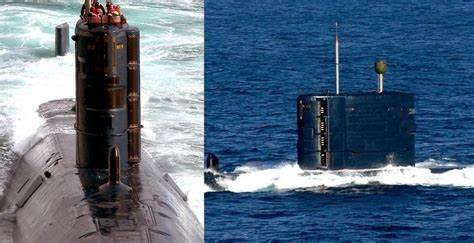Non-Acoustic Detection of Submarine from Satellite: A New Challenge for Undersea Warfare

Submarines are among the most stealthy and formidable weapons in modern warfare. They can operate undetected in the depths of the ocean, carrying out missions ranging from intelligence gathering to nuclear deterrence. However, as technology advances, so does the threat of detection. In this blog post, we will explore one of the emerging methods of locating submarines: non-acoustic detection from satellite.
Non-acoustic detection is the term used to describe any technique that does not rely on sound waves to find a submerged target. Sound waves are the primary means of underwater communication and navigation, but they have limitations. They can be distorted by temperature, salinity, and pressure gradients in the water, as well as by ambient noise from natural and human sources. They can also be reduced or masked by submarine stealth technologies, such as quiet propulsion systems, sound-absorbing materials, and anechoic coatings.
Non-acoustic detection, on the other hand, can exploit other physical properties of submarines and their environment, such as heat, radiation, chemicals, bubbles, or magnetic fields. These properties can create signatures that can be detected by sensors mounted on various platforms, such as aircraft, ships, buoys, or satellites. Non-acoustic detection can complement acoustic detection by providing additional information or confirming a target’s identity.
One of the most promising platforms for non-acoustic detection is satellite. Satellites have several advantages over other platforms, such as wide coverage, long endurance, high resolution, and low vulnerability. Satellites can also access areas that are difficult or dangerous for other platforms to reach, such as the polar regions, the open ocean, or hostile waters. Satellites can use different types of sensors to detect submarines, such as optical, infrared, radar, or magnetic.
Optical sensors can use visible or near-infrared light to image the ocean surface or the water column. Optical sensors can detect the wake or the shadow of a submarine, as well as its direct reflection if it is close enough to the surface. It can also measure the color or the turbidity of the water, which can indicate the presence of chemicals or particles left by a submarine. However, optical sensors have limitations, such as dependence on sunlight, atmospheric interference, and low penetration depth in water.
Infrared sensors can use thermal infrared radiation to measure the temperature difference between the ocean surface and the surrounding air. Infrared sensors can detect the heat signature of a submarine, as well as the thermal wake it creates as it moves through the water. It can also detect the cold wake of a submarine that dives from the surface, as well as the hot spots of its exhaust or reactor. However, infrared sensors have limitations, such as sensitivity to weather conditions, sea state, and diurnal cycles.
Radar sensors can use radio waves to scan the ocean surface or the water column. Radar sensors can detect the surface or the periscope of a submarine, as well as the radar cross-section of its hull or its wake. It can also measure the height or the roughness of the ocean surface, which can indicate the presence of bubbles or turbulence caused by a submarine. However, radar sensors have limitations, such as attenuation by water, clutter from waves or land, and jamming by electronic countermeasures.
Magnetic sensors can use magnetometers to measure the magnetic field of the Earth or the anomalies caused by a submarine. Magnetic sensors can detect the magnetic signature of a submarine, as well as the ionized trail it leaves behind in the water. It can also measure the geomagnetic variations or the disturbances caused by solar activity, which can affect the accuracy of a submarine’s navigation. However, magnetic sensors have limitations, such as low resolution, high noise, and interference from other sources.
